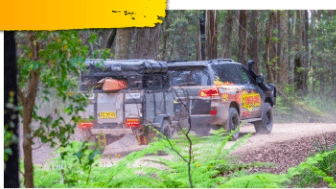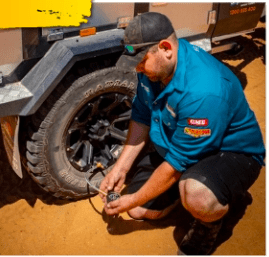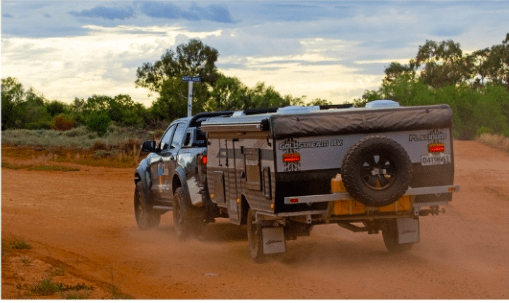Improve your Fuel Economy
With fuel prices sky rocketing, it’s time to see what exactly effects our vehicles fuel economy!
Let’s face it, our 4WD’s constantly need a repeated dose of fuel, and given their size and weight it’s always going to be a more expensive endeavour to fill your tank than that of your average passenger vehicle. But we’re a different breed than the typical road user, we often see our vehicles as a means to facilitate our hobby – exploring Australia and living the camping lifestyle, right? We understand the price of fuel is like the admission ticket to play the 4WDing game, whereas most other people think it’s the end of the world when the price goes up a few cents per litre. This is mainly because they’d rather be spending the extra money on their chosen hobbies. At the same time, it doesn’t take a rocket scientist to realise the more you spend at the bowser the less you have for future travels. So, we thought we’d dive into what we as 4WD adventurers can do to improve our vehicles fuel economy in the hopes of stretching that dollar a little further!
Snorkels

A snorkel is one accessory that belongs on any 4WD. It helps raise the height of your vehicle air intake to reduce the risk of it sucking in a big mouthful of water during a river crossing. Plus, that extra height allows it to breath in the fresher air up top on dusty roads, too. But did you know it can actually help improve your fuel economy? While some may argue that a snorkel just creates more wind drag, the reality is it the snorkel can actually create a ram effect on the air travelling down into the engine, spiralling it and allowing it to enter at a higher velocity. On an electronically injected engine, it means more fuel can be added to match resulting in more power. A bit of extra mumbo means you don’t have to sink your boot in to arrive or maintain your desired speed. In fact, we were able to confirm this using before and after snorkel installation fuel usage results on a diesel 80 series LandCruiser. The results? Well, the mighty 80 series saved 1.32L/100km with a snorkel installed!
Tyre Pressures
 We all know having the correct tyre pressures is a crucial part of 4WDing on the tough stuff, but did you know it’s just as important to your fuel consumption on the black top? Yep, off-road we lower our tyre pressures to increase our tyres footprint for maximum traction, whereas on road the bigger the footprint the harder our vehicle has to work to push that larger footprint along. In fact, dropping just 5psi out of your tyres can quite easily increase your fuel economy by over a litre per 100km!
We all know having the correct tyre pressures is a crucial part of 4WDing on the tough stuff, but did you know it’s just as important to your fuel consumption on the black top? Yep, off-road we lower our tyre pressures to increase our tyres footprint for maximum traction, whereas on road the bigger the footprint the harder our vehicle has to work to push that larger footprint along. In fact, dropping just 5psi out of your tyres can quite easily increase your fuel economy by over a litre per 100km!
Oh, and while we’re talking about tyres have a think about how the size of your tyres affects economy too. You see altering your tyres rolling diameter (size) can push your vehicle to run outside of its premium torque range on the highway, resulting in higher fuel usage. Plus, the heavier tyres use more power to turn!
Exhaust
 Believe it or not, your factory exhaust system is primarily developed to keep your vehicle as quiet as possible, not for power or efficiency. This also means they can be quite restrictive, meaning all that fresh air your engine is breathing in is having a hard time getting back out, which effects engine performance. Once again, the more power your engine can produce, the less you have to sink your boot into the throttle to get where you need to go, which saves fuel.
Believe it or not, your factory exhaust system is primarily developed to keep your vehicle as quiet as possible, not for power or efficiency. This also means they can be quite restrictive, meaning all that fresh air your engine is breathing in is having a hard time getting back out, which effects engine performance. Once again, the more power your engine can produce, the less you have to sink your boot into the throttle to get where you need to go, which saves fuel.
Air Filters
 Believe it or not, a simple thing like an air filter can play a big part as to how much juice your 4WD burns through. You see, your vehicle needs a precise combination of air and fuel in order to achieve combustion. Too little air being delivered to the cylinders has the effect of producing a fuel mixture that is too rich, which ends up with unburnt fuel passing wasted through your exhaust. Nope, that’s not very economical! Now, the air filter has the job of catching any contaminants before they enter your intake, which means it can get clogged up resulting in restricted air flow. So, the moral of the story is, keep your filter clean or replace it when required!
Believe it or not, a simple thing like an air filter can play a big part as to how much juice your 4WD burns through. You see, your vehicle needs a precise combination of air and fuel in order to achieve combustion. Too little air being delivered to the cylinders has the effect of producing a fuel mixture that is too rich, which ends up with unburnt fuel passing wasted through your exhaust. Nope, that’s not very economical! Now, the air filter has the job of catching any contaminants before they enter your intake, which means it can get clogged up resulting in restricted air flow. So, the moral of the story is, keep your filter clean or replace it when required!
Roof Cages
While a roof rack can be an invaluable bit of gear on your 4WD during a trip away, its no secret they disrupt the aerodynamics of your 4WD, which effects your fuel economy. If you’ve ever seen footage of a vehicle in a wind tunnel from the side, you can clearly see the air channelling smoothly up and over the top of the windscreen, across the roof and out the rear of the vehicle. A roof rack messes with this flow quite substantially, it’s like trying to hold a book out the window at 110km per hour. Plus, the roof cage itself can weight up to 100kg for a solid steel version, which only makes things harder on your rig. The fix is simple, take the roof rack off while you’re not using it between trips. The results will be more than worth the effort!
Driving Style
 While we can go through the list of modifications that do and don’t improve your fuel economy the reality is how you drive your vehicle will make the biggest difference. At the end of the day, there’s only one thing that dictates how much fuel your engine uses and that’s how hard and how often you jam the throttle towards the firewall. The trick is to drive using the engines torque, not power. What’s the difference? Well, driving using the engines power means flattening the accelerator every chance you get, ringing each gear out and getting your transmission to kick back gears every two seconds. Whereas driving to your engines torque is all about finding that sweet spot, the place where you’re maintaining your road speed with the barest amount of throttle. It means allowing
While we can go through the list of modifications that do and don’t improve your fuel economy the reality is how you drive your vehicle will make the biggest difference. At the end of the day, there’s only one thing that dictates how much fuel your engine uses and that’s how hard and how often you jam the throttle towards the firewall. The trick is to drive using the engines torque, not power. What’s the difference? Well, driving using the engines power means flattening the accelerator every chance you get, ringing each gear out and getting your transmission to kick back gears every two seconds. Whereas driving to your engines torque is all about finding that sweet spot, the place where you’re maintaining your road speed with the barest amount of throttle. It means allowing
your engine to dictate the road speed by sitting right in your engines torque curve as much as possible. Put simply, it means coasting up a hill at 80km/h instead of 100km/h if that’s what your engine is most comfortable at!
Weight Savings
 Believe it or not, the truest indication of performance isn’t just power, it’s the power to weight ratio. Yep, it’s the reason why performance vehicle builders spend so much time removing dead weight from their vehicles; it’s the enemy of performance! By that logic, the simplest and easiest way to increase your vehicles performance isn’t to go and spend thousands of dollars on power-up accessories, but to reduce the weight where possible. So, things like fridges, jerry cans, and multiple spare tyres can be removed to help increase performance and lower fuel consumption.
Believe it or not, the truest indication of performance isn’t just power, it’s the power to weight ratio. Yep, it’s the reason why performance vehicle builders spend so much time removing dead weight from their vehicles; it’s the enemy of performance! By that logic, the simplest and easiest way to increase your vehicles performance isn’t to go and spend thousands of dollars on power-up accessories, but to reduce the weight where possible. So, things like fridges, jerry cans, and multiple spare tyres can be removed to help increase performance and lower fuel consumption.
Parting Words
At the end of the day, we’re still a few years away from running electric vehicles deep into the heart of Australia. That means we need to adapt to fuel prices in order to maintain our adventurous lifestyles! So when prices at the pump skyrocket, maybe its time we try a few of these techniques to improve our fuel economy, eh?
